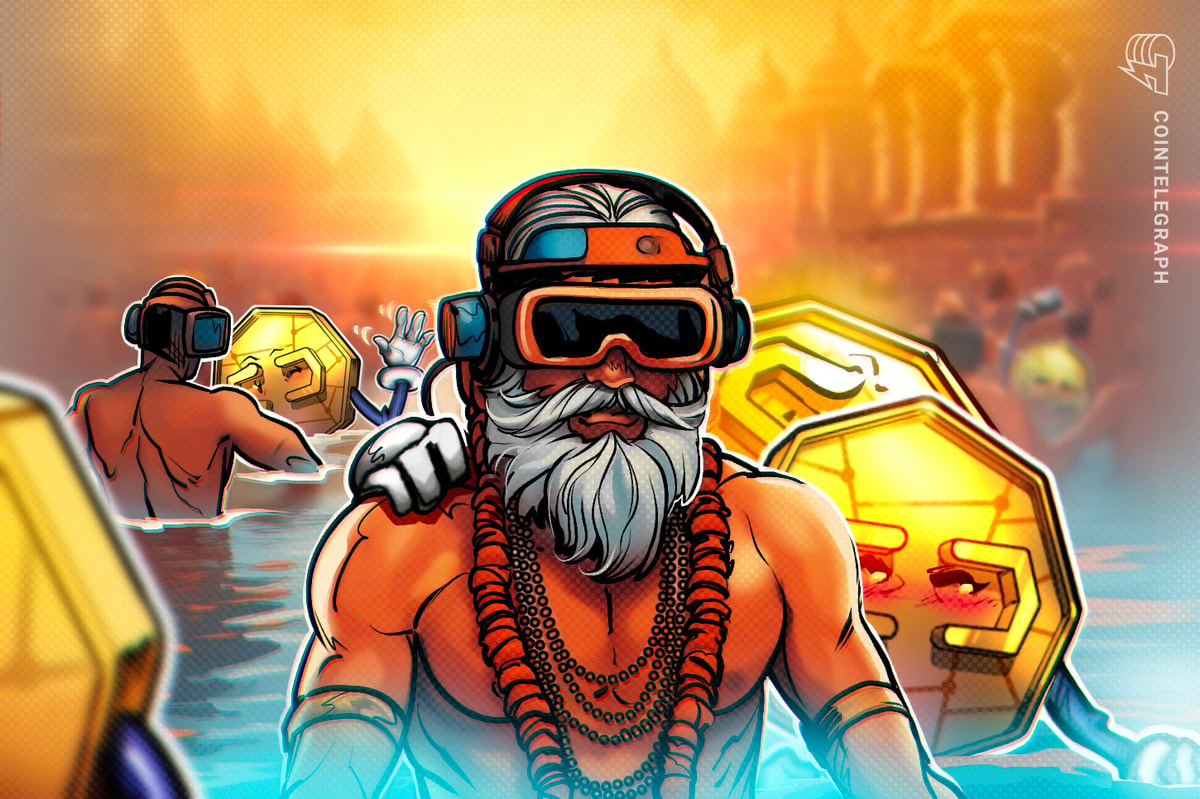India’s MahaKumbh: A Unique Blend of Tradition and Technology
Recently, India witnessed the MahaKumbh, a significant Hindu gathering that occurs once every 144 years, featuring some unusual sights. At the Sangam, where the Ganga, Yamuna, and Sarasvati rivers meet, a man took daily dips while distributing passport-sized photos symbolizing “Digital Snan,” or digital nectar baths. A vast nine-acre camp showcased the essence of Hinduism throughout history, while many families experienced a complete virtual tour of the MahaKumbh through VR headsets, receiving packaged pure Sangam water delivered to their homes. These remarkable events raise an intriguing question: Can this blend of technology and tradition provide insights into India’s future within the metaverse? Certainly.
India’s Unique Technological Adoption
India has always had a distinctive relationship with technology, often bypassing traditional stages of adoption. A notable example is the country’s transition to mobile-first digital experiences, with many households never even having a landline. As immersive technologies begin to gain traction, India is demonstrating its characteristic pattern of embracing these advancements. In recent years, the digitization of religious experiences has significantly increased. The VR Devotee app, launched in 2016, allowed users to virtually partake in rituals and festivals from over 150 temples, witnessing a substantial 40% increase in engagement during the COVID-19 pandemic. Recognizing this trend, the Indian government introduced “Temple 360” in 2022, a web portal that offers virtual darshan from major pilgrimage sites. During the 2020 Puri Jagannath Rath Yatra, which was held without public attendance for the first time, millions tuned in to watch the event live, a trend that has continued with other pilgrimages across the country.
MahaKumbh’s Significance in Embracing Digital Experiences
The integration of immersive technologies at the MahaKumbh, which attracted over 663 million pilgrims, underscores a significant cultural readiness to adopt digital experiences alongside deep spiritual traditions. If such profound ceremonies can incorporate technological advancements, it reflects a broader acceptance of these changes within society.
Government Support for Emerging Technologies
Under the Digital India initiative, augmented reality (AR) and virtual reality (VR) have been recognized as pivotal technologies, alongside artificial intelligence, blockchain, and 5G. This recognition is backed by tangible government actions, such as the establishment of Centers of Excellence like VARCoE at the Indian Institute of Technology Bhubaneswar and the launch of initiatives like IMAGE to support extended reality (XR) startups. In 2022, the Ministry of Electronics and Information Technology partnered with Meta to introduce the XR Startup Program, providing grants of 20 lakh Indian rupees (approximately $23,000) to 16 startups. Additionally, the Uttar Pradesh government has launched a 3D VR experience center in Ayodhya, while several prominent Hindu sites, including Kashi Vishwanath Dham and Maa Vaishno Devi Bhawan, have embraced immersive technologies, signaling a deliberate strategy to enhance XR adoption in India, leveraging the country’s rich cultural heritage.
Corporate Initiatives Reflecting Readiness for the Metaverse
A clear indication of India’s readiness for the metaverse can be observed in the corporate sector, with Reliance Industries leading the way under the leadership of Mukesh Ambani, Asia’s wealthiest individual. Jio Platforms has recently formed a partnership with Polygon Labs to integrate Web3 and blockchain features into its extensive digital ecosystem. This collaboration is significant, as it aims to introduce Web3 capabilities to Jio’s vast user base of over 482 million customers. Jio has previously signaled its commitment to immersive technologies by launching “Jio Glass,” an affordable mixed-reality headset tailored for the Indian market. The company’s acquisition of Tesseract in 2019 and recent negotiations with Meta further highlight its long-term investment in immersive technology. Reliance’s strategic focus on metaverse-enabling technologies underscores the promising future of digital experiences in India. Following the announcement of its collaboration with Polygon, Jio also introduced its mystery JioCoin, marking a noteworthy development for the Indian Web3 ecosystem. Additionally, the Indian Railway Catering and Tourism Corporation has begun issuing non-fungible token (NFT) train tickets on the Polygon blockchain for passengers attending the MahaKumbh festival. These efforts specifically utilize Polygon for its rapid transaction capabilities and minimal fees, indicating a growing maturity in India’s blockchain landscape.
Challenges and Concerns Surrounding Digital Spirituality
Despite the enthusiasm for digitizing sacred experiences, some remain skeptical about this shift. The introduction of the “Digital Snan” service at Sangam, priced at 1,100 rupees, sparked considerable backlash on social media, with critics arguing that it commercializes spirituality and reduces sacred rituals to mere transactions. Additionally, it has been over eight years since Pokémon Go revolutionized the realm of augmented reality, showcasing the technology’s potential to create cultural phenomena that resonate across demographics. The absence of a similarly defining moment since then raises questions about whether immersive technologies can achieve the same widespread adoption as smartphones. While VR arcades attract young audiences for occasional experiences, consistent usage has yet to emerge outside certain professional settings.
Potential for a Culturally Grounded Metaverse
What sets India’s potential metaverse apart from Western models is its foundation in culturally significant contexts that resonate with millions. While Silicon Valley often focuses on virtual offices and digital asset trading, India’s initial applications prioritize democratizing access to culturally meaningful experiences. This culturally anchored approach might prove to be more sustainable in the long run. By addressing real human needs—such as connecting with heritage, engaging in community rituals, and facilitating access to experiences that might otherwise be unattainable due to distance or disability—India’s metaverse initiatives may finally discover the essential purpose that has eluded mainstream adoption in other regions.
This article is for general information purposes and is not intended to be and should not be taken as legal or investment advice. The views, thoughts, and opinions expressed here are the author’s alone and do not necessarily reflect or represent the views and opinions of Cointelegraph.

